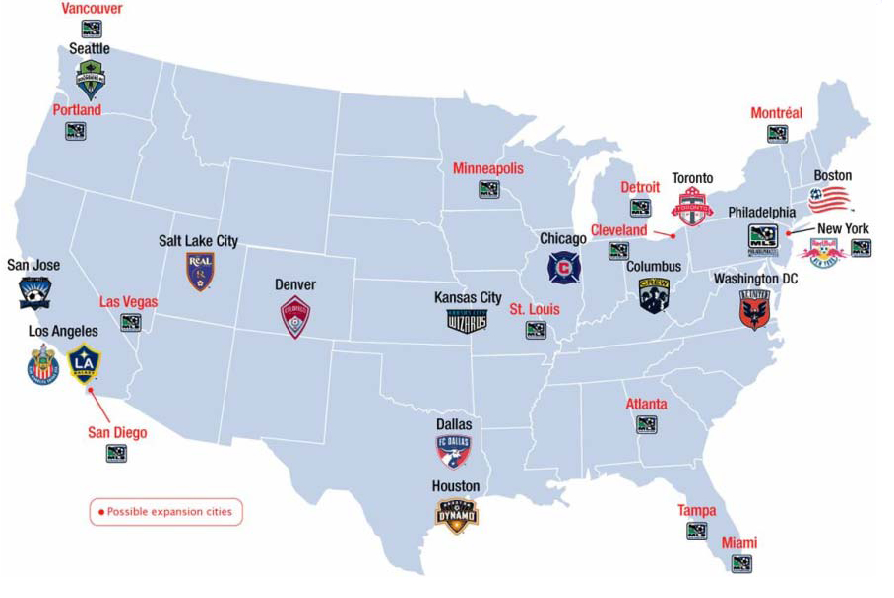When Major League Soccer began play in 1996, the league consisted of ten teams and was met with skepticism. Now in its 23rd season, MLS is not only growing, it is flourishing.
The MLS board of governors recently voted to expand to 30 teams “in the coming years.” The league currently has 24 teams, with Miami and Nashville scheduled to join next season and Austin, Texas, in 2021. That makes MLS, which has added 17 teams since 2005, the fastest-growing league in North American professional sports.
According to Commissioner Don Garber, “We particularly, in the last 10 years, have been experiencing unprecedented growth. Expansion has been a key driver of that growth, and it really is a great measure of the enormous enthusiasm and really the commitment that our fans have in markets both new and old to support our league and our players and to see the support grow continually.”
FC Cincinnati is the newest club to join MLS
Cities currently being considered for teams include St. Louis, Sacramento, Phoenix, Las Vegas, Detroit and Charlotte.
Some question whether the league is growing too fast? In Southern California, one of the nation’s most crowded sports markets, LAFC has sold out every home game it has played, while the Galaxy saw its own attendance jump 10% last season.,
That success isn’t shared throughout the league, however. Only eight teams showed attendance increases last season with three (Chicago Fire, New York Red Bulls and Columbus Crew) experiencing double-digit declines. That led to the first league-wide attendance drop in five seasons.
FC Austin will join MLS in 2021
The television numbers are better, with cable viewership increasing in each of the last six seasons and ad inventory selling out each of the last three years.
The overall numbers were modest, however, with the 2018 cable average of 276,000 ranking behind what the WNBA playoffs drew last year.
One problem the league faces is whether there are enough talented players to support its growth. The league was established, in part, to assist in the development of domestic players, but in the last five seasons the percentage of U.S.-born players on MLS rosters has declined nearly 9%, to 44.3%.
The growth of the league has been due to an increase in international signings. This has made MLS the youngest and most diverse sports league in North America. One problem in continuing to maintain this growth is the league’s current roster rules.
Inter Miami CF, partially owned by David Beckham, will begin play in 2020
Currently each team is allotted a maximum of three designated players and eight international roster slots. If those numbers don’t increase, domestic players will have to fill the remaining roster spots. That could lead to a decline in play.
Garber disagrees, “We're in a global market. We have 30,000 registered professional soccer players to select from. Frankly, I think it's the opposite. You start thinking about the global interest in coming to our league, it's driven by the fact that there's so much opportunity, so many jobs. One of the byproducts of expansion is just opportunity.”
The problems that MLS is currently facing are good news. The league’s growth and fan interest means that MLS is experiencing success. The roster rules may need to change to accommodate this growth, but this change is a by produce of progress.




